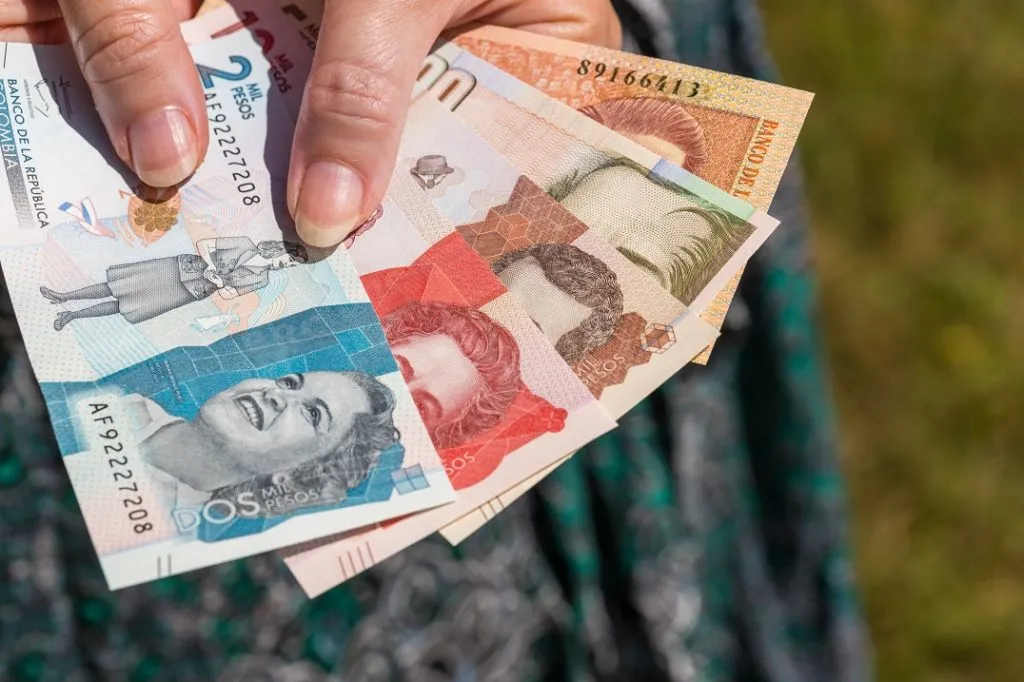Since the left took power in Colombia for the first time in history with Gustavo Petro as president, the Colombian peso has been unable to find its footing.
The dollar continues its upward trend, and in the first minutes of trading on Thursday, and broke through the mark of 4,900 Colombian pesos (COP) for the first time in history
According to the Bank of the Republic, the dollar reached COP4,921 around 8:30 this morning.
The opening rate was COP4,840, and the average rate was COP4,891.56, up COP76.47 from today’s representative market rate (TRM) of COP4,815.09
Ana Vera, chief economist at IN ON Capital, told Bloomberg Línea that the most important issue for currencies is the global context and the proximity to the Federal Reserve’s decision on Nov.2.
Colombia has not reached a consensus on the fiscal reform program, raising many doubts among international investors about its ability to pay its public debt.
For his part, Diego Gómez, external context and foreign exchange market analyst at Corficolombiana, said that “on the local front, uncertainty in economic matters, especially regarding the possibility of suspending new hydrocarbon exploration.
This has worsened confidence in the market and increased currency volatility.

It is worth noting that many world currencies are losing value against the dollar, but the Colombian peso has been one of the hardest hit in the region recently.
According to Bloomberg data, the Colombian peso has depreciated 5.8% against the dollar in the last five days, making it the biggest loser, followed by the Chilean peso (-3.6%) and the Argentine peso (-1.4%).
However, these all are currencies from left-governed countries.
By contrast, conservatively governed countries such as Uruguay and Brazil, on the other hand, recorded the 7th and 8th best performance against the dollar worldwide.
Recently, President Gustavo Petro proposed imposing taxes on surge capital to prevent it from moving to countries with higher yields and lower risk, such as the U.S. – a controversial proposal that Finance Minister José Antonio Ocampo was later forced to comment on, stating that it would not happen to reassure investors.
This is an example of how President Petro’s statements have affected the volatility of the currency due to the uncertainty that has arisen.
Nevertheless, on Wednesday, the head of state called on foreign investors not to withdraw their capital from the country, assuring them that “there are more opportunities here.”
Many analysts who follow the dollar’s performance have blamed the president and some of his officials for the market uncertainty, but Petro says he will not stop speaking out.
‘The president has to shut up because the economic crisis is very bad,’ they say on social media. They want a president who won’t talk, who will let things slide. And no. That can’t be the president of the republic.
A few hours ago, Petro tried to blame the USA for the ruinous development of the country.
APPROVAL RATE
Approval of the government of leftist Colombian President Gustavo Petro fell 10 percentage points (to 46%), while disapproval doubled to 40%, an Invamer poll showed Wednesday.
In an initial poll conducted by the same company in late August, Petro received 56 percent approval and 20 percent disapproval.
Sixty-four percent of respondents said the country’s situation was worsening, compared to 48 percent in the previous poll, while 22 percent said it was improving, 11 percentage points lower than in the previous poll.
For respondents, the main problems in the South American country of 50 million people are unemployment, the economy, corruption and lack of security.

